Certification No Country of origin Cyprus Aging 1-2 months | Milk source Goat, Sheep Texture Semi-soft | |
Region Cyprus, Greece, Iraq, Jordan, Israel, Lebanon, Palestine, Syria and Turkey Source of milk Goat, sheep, sometimes cow Pasteurised Commercially, but not traditionally Aging time Commercially not aged
Traditionally aged Similar Feta, Falafel, Hummus, Cheese, Moussaka | ||
How to make halloumi cheese an instructional video
Halloumi /həˈluːmi/ (Greek: χαλλούμι) or hellim (Turkish) (from Arabic: حلوم ḥallūm [ħalˈluːm]) is a Cypriot semi-hard, unripened brined cheese made from a mixture of goat's and sheep's milk, and sometimes also cow's milk. It has a high melting point and so can easily be fried or grilled. Halloumi is set with rennet and is unusual in that no acid or acid-producing bacterium is used in its preparation.
Contents
- How to make halloumi cheese an instructional video
- How to make halloumi or helim at home
- Cypriot HalloumiHellim
- Middle East
- Etymology
- Nutritional facts
- References
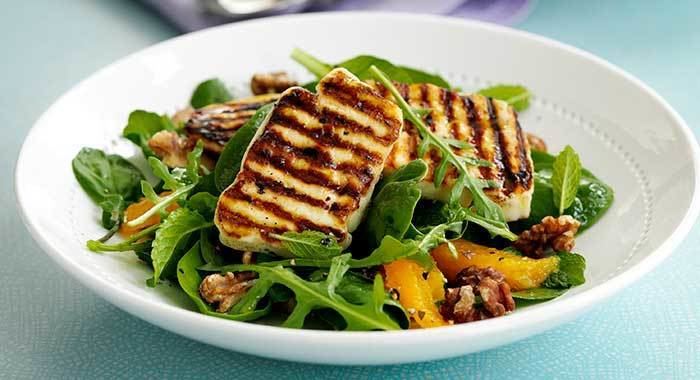
Halloumi is popular in the Levant, Greece, and Turkey. Demand in the United Kingdom had surpassed every other European country, except Cyprus, by 2013.
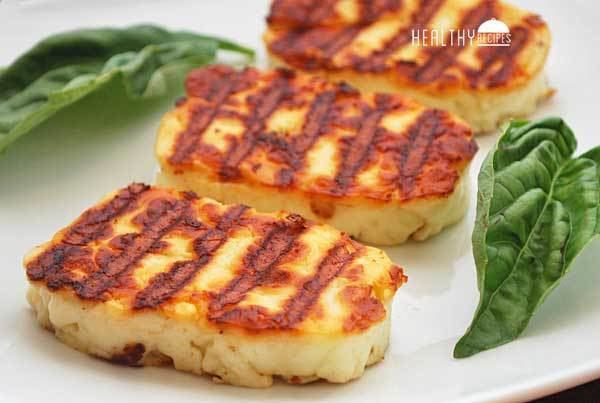
How to make halloumi or helim at home
Cypriot Halloumi/Hellim
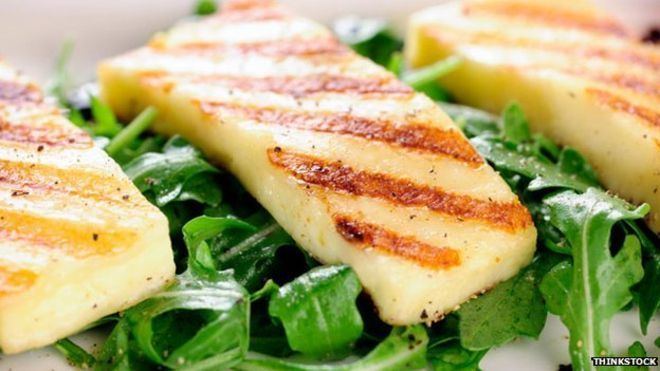
Halloumi cheese originated in Cyprus in the Medieval Byzantine period (AD 395 – 1191), and was subsequently eaten throughout the Middle East.
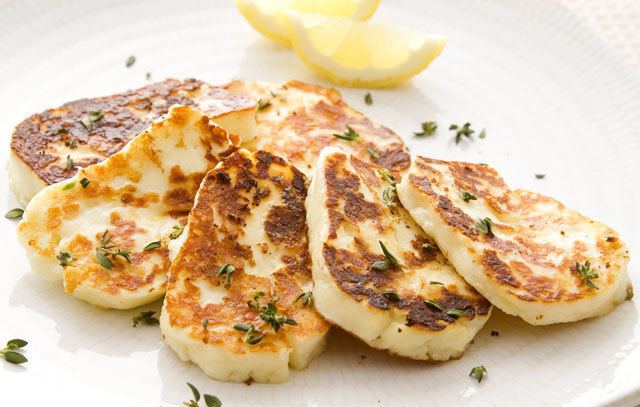
The cheese is white, with a distinctive layered texture, similar to mozzarella and has a salty flavour. It is stored in its natural juices with salt-water and can keep for up to a year if frozen below −18 °C (0 °F) and defrosted to +4 °C (39 °F) before sale. It is often garnished with mint, a practice based in the belief that halloumi keeps better and stays fresher and more flavoursome when wrapped with mint leaves. In accordance with this tradition, many packages of halloumi contain fragments of mint leaves on the surface of the cheese.
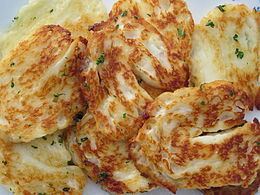
The cheese is often used in cooking and can be fried until brown without melting, owing to its higher-than-normal melting point. This makes it an excellent cheese for frying or grilling (like for saganaki) or fried and served with vegetables, or as an ingredient in salads. Cypriots like eating halloumi with watermelon in the warm months, and as halloumi and lountza, a combination of halloumi cheese and either a slice of smoked pork, or a soft lamb sausage.
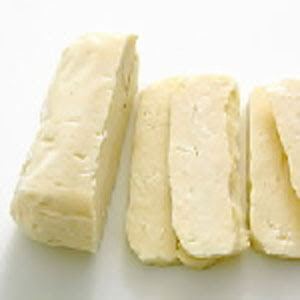
The resistance to melting comes from the fresh curd being heated before being shaped and placed in brine. Traditional halloumi is a semicircular shape, about the size of a large wallet, weighing 220–270 g. The fat content is approximately 25% wet weight, 47% dry weight with about 17% protein. Its firm texture when cooked causes it to squeak on the teeth when being chewed.
Traditional halloumi is made from unpasteurised sheep and goat milk. Many people also like halloumi that has been aged; kept in its brine, it is much drier, much stronger and much saltier, making it very different from the milder halloumi generally used in the West.
Halloumi is registered as a protected Cypriot product within the United States (since the 1990s) but not yet in the European Union. The delay in registering the name halloumi with the EU has been largely due to a conflict between dairy producers and sheep and goat farmers as to whether registered halloumi may contain cow’s milk, and how much. Most Cypriots agree that, traditionally, halloumi was made from sheep and goat milk, since there were few cows on the island until they were brought over by the British in the 20th century. But as demand grew, industrial cheese-makers began using more of the cheaper and more-plentiful cow's milk.
Middle East
Halloumi is regularly consumed in many parts of the Middle East such as Lebanon, Turkey, Syria, Palestine, Jordan, Israel, Egypt and Iraq. In most of the Arab states, the cheese is called halloum and it is served with meze. It is a traditional component of the Arab breakfast, eaten either fresh or fried, along with other Arab dishes such as hummus, falafel, and khubz. Halloumi cheese is very similar to Nablusi cheese, named after Nablus, Palestine, its city of origin. Some believe that Halloumi cheese is Arab and of Levantine creation, due to its similarity to Nablusi cheese and the region's long history of consuming Halloumi cheese. In Israel, it is called by its Greek name. Halloumi in Israel is sometimes fried in olive oil and served for breakfast and served with meze. It is also eaten with fish.
Etymology
The name "halloumi" is derived from the Egyptian Arabic, itself a loanword from Coptic ϩⲁⲗⲱⲙ halom (Sahidic) and ⲁⲗⲱⲙ alom (Bohairic) 'cheese', referring to a cheese that was eaten in medieval Egypt. In modern Egypt, hâlûmi is similar to Cypriot "halloumi" but is essentially a different cheese, is eaten either fresh or brined and spiced.
Nutritional facts
100 grams of commercially produced packaged halloumi has a typical composition of:
